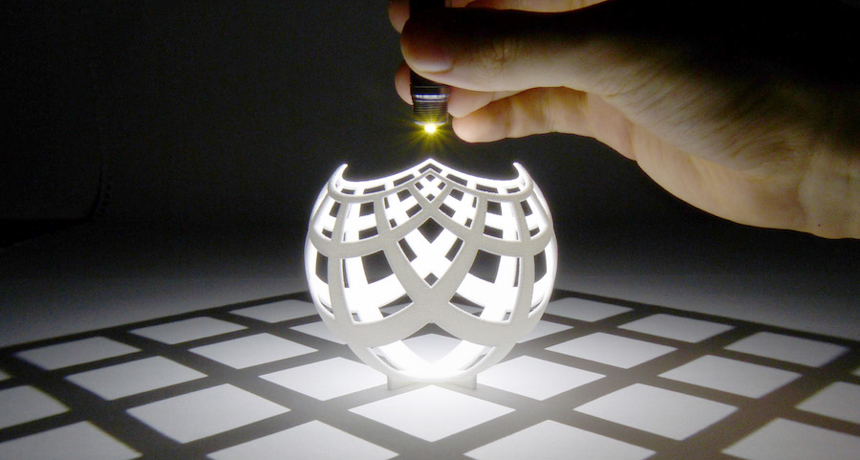Questions for ‘For these artists, math is their muse’

"Grid," by math artist Henry Segerman, explores mathematical concepts using projections. This 3-D printed sculpture is a patterned sphere. When light shines through the openings from above, the shadows form a square grid.
H. Segerman